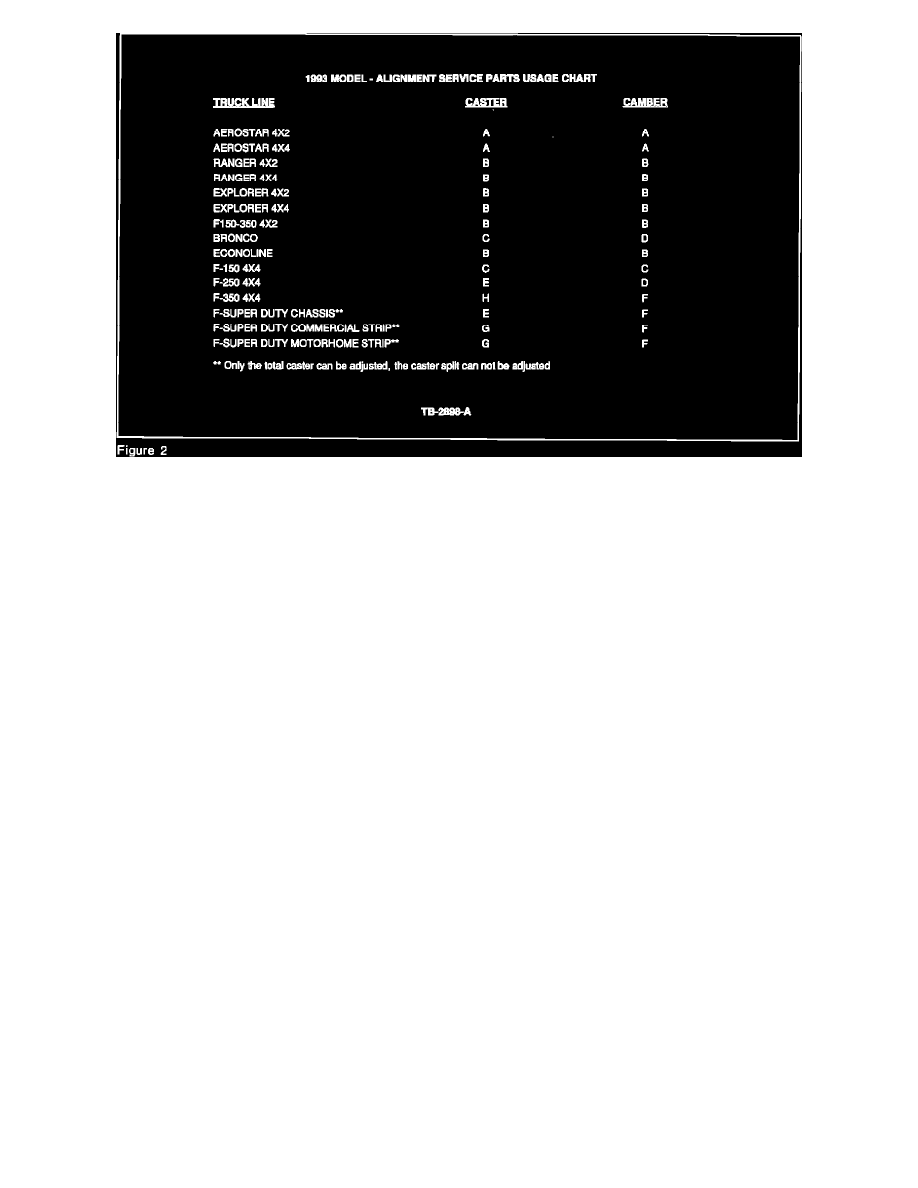Ranger 4WD V6-183 3.0L (1993)

If Light Truck Service Manual Diagnostics indicate the need for a front alignment adjustment, use the optimum alignment settings and caster/camber
adjustment parts list, Figure 2. Refer to the appropriate 1993 Light Truck Service Manual for service details.
Be sure that the following required vehicle conditions are met before checking alignment.
^
No driver and/or passenger in vehicle
^
Full fluids
^
All tires set to specified pressure
^
All tire sizes comparable to original equipment
^
Vehicle configured to normal operated conditions (Not to exceed Maximum GAWR, Maximum Rear GAWR, and/or Maximum GVW)
DEFINITIONS
CAMBER AVERAGE is defined as LH camber plus RH camber divided by 2 (LH Camber + RH Camber)/2.
Vehicles set to this specification, as measured with the vehicle loaded to normal loading conditions will result in optimum tire wear.
CASTER AVERAGE is defined as LH caster plus RH caster divided by 2 (LH Caster + RH Caster)/2.
These are not recommended values for settings. They are only maximum and minimum limitations. Vehicles outside these limits may exhibit the
following concerns.
^
Vehicles which exceed the maximum caster value may result in shimmy concerns.
^
Vehicles operated below the minimum caster value may wander and have poor steering returnability concerns.
CAMBER SPLIT is defined as LH camber minus RH camber (LH camber - RH camber).
CASTER SPLIT is defined as LH caster minus RH caster (LH caster - RH caster).
NOTE:
VEHICLES WITH AVERAGE CASTER AND/OR CAMBER SIGNIFICANTLY OUT OF SPECIFIED RANGES MAY HAVE A RIDE HEIGHT
OUT OF NORMAL OPERATING RANGE. NORMAL SERVICE PROCEDURES MAY NOT PROVIDE ADEQUATE ADJUSTMENT TO BRING
THE ALIGNMENT TO THE PREFERRED SPECIFICATION. IF RIDE HEIGHT APPEARS TO BE AN ISSUE, INVESTIGATE AS FOLLOWS:
Front ride height can be below specification if the front loading exceeds the rated capacity listed on the certification label.
